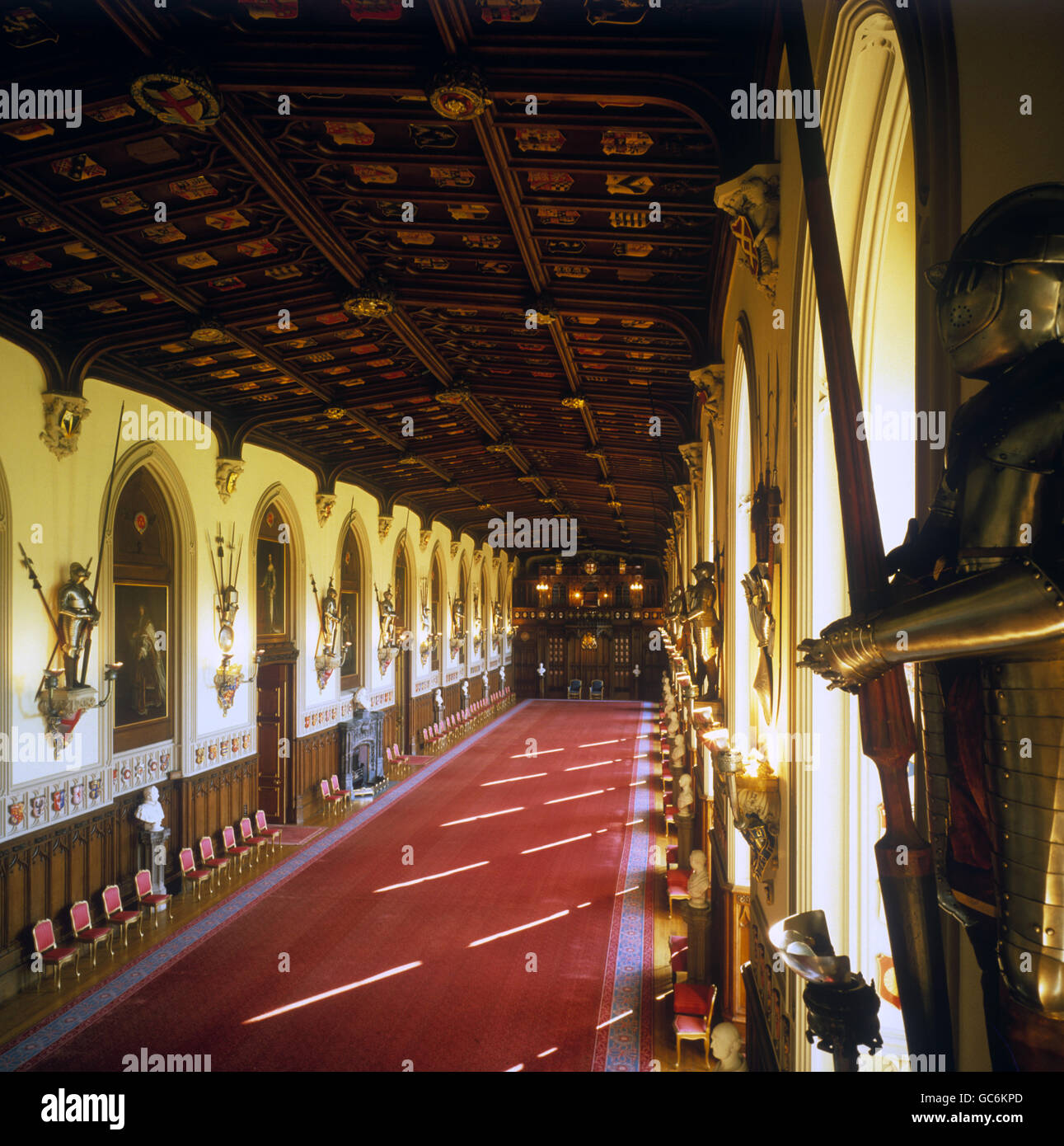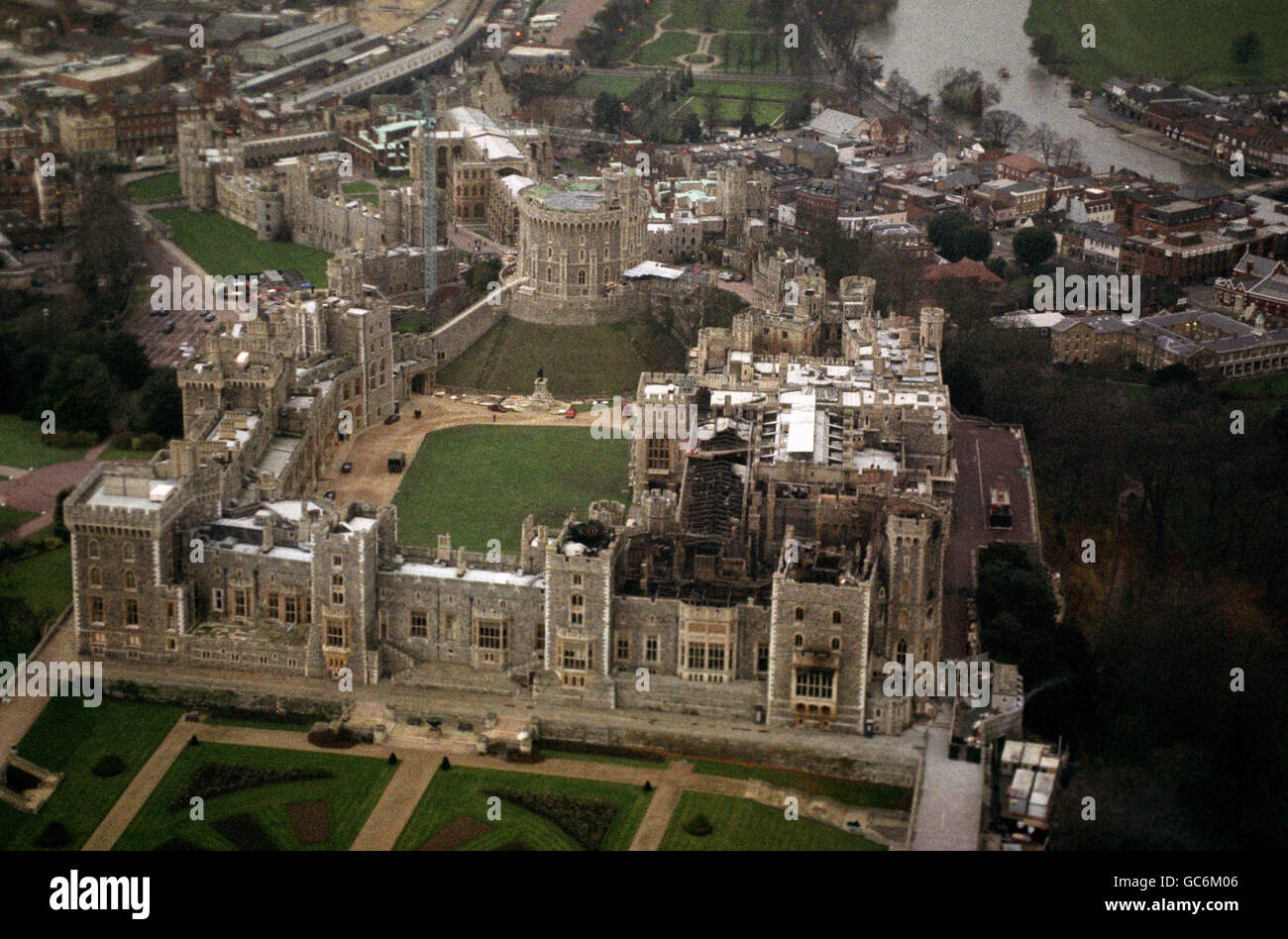Windsor Castle Fire: A Comprehensive Look At The Historic Blaze And Its Impact
The Windsor Castle fire of 1992 remains one of the most significant events in British royal history, capturing global attention and reshaping the way the castle is preserved today. This historic incident not only damaged a significant portion of the royal residence but also sparked debates about funding and restoration efforts. Understanding the causes, consequences, and aftermath of the fire provides valuable insights into the preservation of historical landmarks.
Windsor Castle, one of the most iconic royal residences in the world, has witnessed centuries of history. However, the fire that erupted on November 20, 1992, threatened to erase part of its legacy. The disaster led to an extensive restoration project that took five years to complete and became a turning point for the British monarchy's approach to maintaining such historical treasures.
As we delve into the details of the Windsor Castle fire, this article explores the causes, the scale of destruction, the restoration efforts, and the lessons learned. Whether you're a history enthusiast, a student of architecture, or simply curious about the event, this article offers a comprehensive overview supported by reliable sources and expert insights.
Read also:Hailies Song Eminems Heartfelt Tribute Through Lyrics
Table of Contents
- Biography of Windsor Castle
- What Caused the Windsor Castle Fire?
- The Scale of Damage
- The Restoration Process
- Royal Funding and Public Debate
- Architectural Significance of Windsor Castle
- Fire Prevention Measures Post-Incident
- Historical Impact of the Fire
- Visitor Experience Today
- Conclusion
Biography of Windsor Castle
Windsor Castle, located in Berkshire, England, is one of the oldest and largest inhabited castles in the world. Built in the 11th century by William the Conqueror, it has served as a royal residence for over 900 years. The castle spans an impressive 13 acres and includes the State Apartments, St. George's Chapel, and the Round Tower.
Throughout its history, Windsor Castle has undergone numerous renovations and expansions, reflecting the architectural styles of different eras. Its rich history and cultural significance make it a vital part of Britain's heritage.
Brief History and Key Facts
Below is a summary of key facts about Windsor Castle:
| Fact | Detail |
|---|---|
| Year Built | 1070 |
| Current Resident | King Charles III |
| Size | 13 acres |
| Notable Features | State Apartments, St. George's Chapel |
What Caused the Windsor Castle Fire?
The Windsor Castle fire began on November 20, 1992, in the Private Chapel of the castle. According to official reports, the fire was caused by a spotlight that ignited a curtain during restoration work. The castle was undergoing routine maintenance at the time, and safety protocols were reportedly not strictly followed, contributing to the rapid spread of the blaze.
Factors Contributing to the Fire
- Use of outdated electrical equipment during restoration.
- Inadequate fire safety measures in historic buildings.
- Highly flammable materials used in the construction of older sections of the castle.
The Scale of Damage
The fire raged for over 15 hours, destroying approximately 115 rooms, including nine State Apartments. Iconic spaces such as the Crimson Drawing Room and the Grand Reception Room were severely damaged. The estimated cost of the damage was £37 million, making it one of the most expensive restoration projects in British history.
Areas Affected
- State Apartments
- Private Chapel
- Grand Reception Room
The Restoration Process
Following the fire, a massive restoration effort was undertaken to restore Windsor Castle to its former glory. Led by a team of architects, historians, and craftsmen, the project aimed to preserve the castle's historical integrity while incorporating modern safety features.
Read also:Dasher Reindeer The Majestic Leader Of Santas Sleigh Team
Key Features of the Restoration
- Reconstruction of damaged rooms using original materials and techniques.
- Installation of advanced fire safety systems, including sprinklers and fire alarms.
- Collaboration with historians to ensure authenticity in design and decoration.
Royal Funding and Public Debate
The cost of restoring Windsor Castle sparked a public debate about how the project should be funded. Initially, the British government proposed covering the costs with taxpayer money, but this plan faced significant opposition. Eventually, it was decided that the restoration would be funded through increased entrance fees to royal properties and the opening of Buckingham Palace to the public.
Public Reaction
Many citizens felt that the monarchy should bear the financial burden of maintaining its properties. However, others recognized the importance of preserving such a significant historical landmark for future generations.
Architectural Significance of Windsor Castle
Windsor Castle is not only a royal residence but also an architectural masterpiece. Its design reflects a blend of medieval, Gothic, and Victorian styles, making it a unique example of British architecture. The castle's towers, walls, and interiors tell stories of centuries of royal history.
Key Architectural Features
- The Round Tower, offering panoramic views of the surrounding area.
- St. George's Chapel, a masterpiece of Perpendicular Gothic architecture.
- The State Apartments, adorned with priceless art and furnishings.
Fire Prevention Measures Post-Incident
In response to the Windsor Castle fire, new fire prevention measures were implemented in historic buildings across the UK. These measures include regular safety inspections, the use of fire-resistant materials, and the installation of modern fire detection systems.
Lessons Learned
The incident highlighted the importance of balancing historical preservation with modern safety standards. It also emphasized the need for strict adherence to safety protocols during restoration projects.
Historical Impact of the Fire
The Windsor Castle fire had a profound impact on British history and the monarchy's relationship with the public. It led to increased transparency in royal finances and a greater focus on preserving historical landmarks. The restoration project also provided an opportunity to incorporate modern technology into the castle's design.
Long-Term Effects
- Improved fire safety standards in historic buildings.
- Increased public interest in royal properties.
- Enhanced preservation efforts for other historical landmarks.
Visitor Experience Today
Today, Windsor Castle continues to attract millions of visitors each year. The castle offers guided tours, exhibitions, and special events that showcase its rich history and cultural significance. Visitors can explore the restored State Apartments, marvel at the grandeur of St. George's Chapel, and enjoy breathtaking views from the Round Tower.
What to Expect
- Guided tours led by knowledgeable guides.
- Access to the restored State Apartments and other key areas.
- Exhibitions featuring royal artifacts and historical documents.
Conclusion
The Windsor Castle fire of 1992 was a devastating event that threatened to erase part of Britain's rich history. However, through a combination of expert restoration efforts, modern safety measures, and public support, the castle was successfully restored to its former glory. This incident serves as a reminder of the importance of preserving historical landmarks and the need for ongoing efforts to protect them for future generations.
We invite you to share your thoughts on this article in the comments section below. For more insights into British history and architecture, explore our other articles on royal residences and historical landmarks. Together, let's continue to appreciate and preserve the treasures of our past.
Data and references for this article were sourced from reputable publications, including the official website of the British monarchy and historical journals. For further reading, consider exploring the works of renowned historians and architectural experts who have studied Windsor Castle and its significance.


